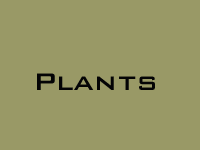
 |
|
|
|
 |
|
|
Plants Plants cover the surface of the Earth and are the source of almost all life on the planet. They dominate the landscape on land and they make up most of the structures that animals and other creatures live around, on, and even in. Photosynthesis is the process by which plants use the sun's energy to convert water and carbon dioxide into sugar and oxygen. This sugar feeds the plant and is the base of virtually every food chain on the planet, while the oxygen is the primary source of the oxygen that almost every organism on the planet need to stay alive. Almost all of the living plant species are flowering plants. This is largely due to flowering plants' associations with insects, who help to fertilize the plants. Of over 230 000 species of plants, 200 000 are flowering plants, with 500 being conifers and their closely related groups, 10 000 ferns and their allies, and 16 000 the usually-overlooked mosses and liverworts. Canada has about 5000 species of plants, almost 4000 of which are flowering plants. Page 2: Ferns and allies Page 3: Conifers (order Coniferales) Page 4: Flowering plants I: Trees Page 5: Flowering plants II:Buttercup and crowfoot (order Ranunculales) Page 6: Flowering plants III: Rushes (order Juncales) Page 7: Flowering plants IV: Pondweeds (order Najadales) Page 8: Other plants
|